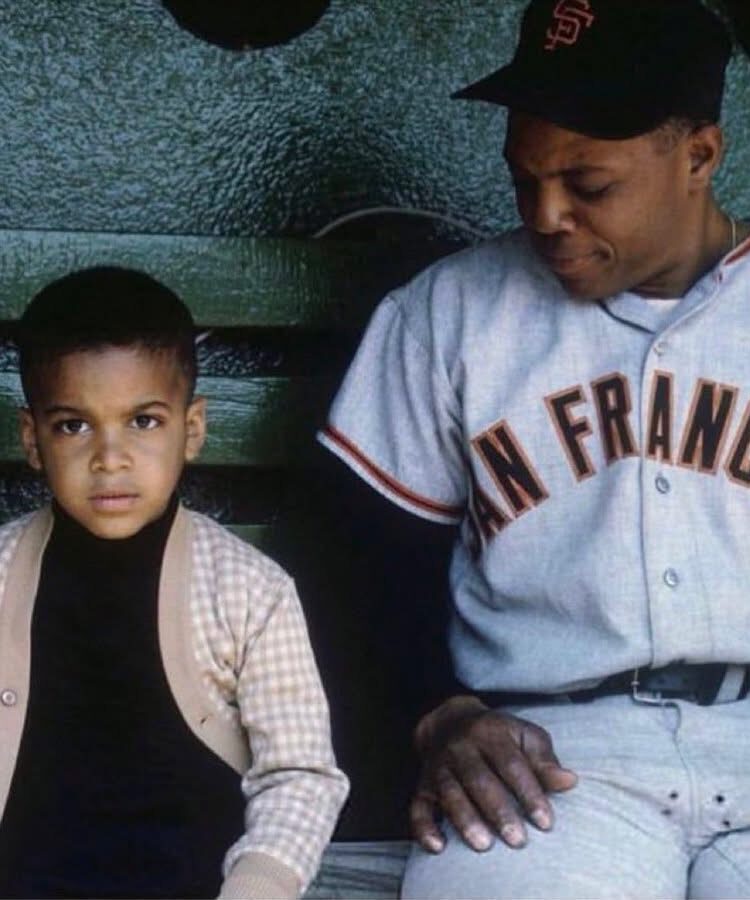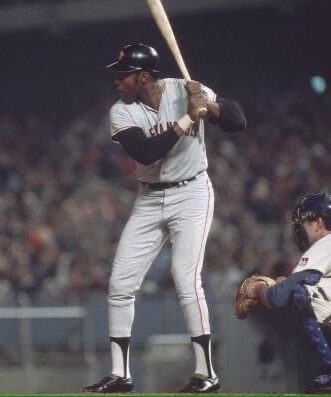
Bobby Bonds began his big league career with the Giants in 1968. For the next decade he was marched toward Cooperstown.
In 1969 Bonds established himself as one of the game’s bright young stars. The right fielder led the NL with 120 runs scored. He slugged 32 homers, stole 45 bases, drove in 90 runs and tallied a 131 OPS+. Bonds followed that up with a 200-hit campaign in ’70 when he slugged .504.
An All Star for the first time in ’71, Bonds smacked 32 homers with 102 RBI while scoring 110 runs. After a down year in ’72, Bonds rebounded in ’73 to come within one home run of becoming baseball’s first 40-homer/40-steal man. He led the NL in both runs scored (131) and total bases (341). Defensively he earned his second Gold Glove to give him a career-best 7.8 WAR.
Though he received his third Gold Glove in ’74, his numbers dipped across the board. Bonds’ statistical decline and problems with alcohol led to an offseason trade for the Yankees’ Bobby Murcer.
Bonds returned to All Star form in New York, recording his third 30-homer/30-steal campaign. In December, 1975 the Yankees sent him to the Angels. His second year with the Halos was one of his finest. Bonds scored 103 runs, hit 37 homers, tallied 308 total bases, drove in 115 runs, and stole 41 bags.
After his two years in Anaheim, Bonds was a veteran of 10 MLB seasons. His 50.3 WAR in his first decade of service was historically great among right fielders. Before Bonds, only five men at his position recorded a higher WAR in their first 10 years. Hank Aaron (73.9), Reggie Jackson (53.7), Paul Waner (53.3), Elmer Flick (52.3), and Mel Ott (52.2) are all in the Hall of Fame.
Despite his performance, the Angels dealt him to the White Sox. Splitting between Chicago and the Rangers in ’78, Bonds enjoyed the last of his 30/30 seasons.
In his final three big league seasons, Bonds played for the Indians, Cardinals, and Cubs before retiring in 1981. The three-time All Star and three-time Gold Glove winner finished his career as the only player with at least 300 homers and 400 steals. Today he’s joined only by his son Barry.
The elder Bonds had nine seasons with at least 25 homers, eight years with at least 80 RBI, and nine campaigns with an OPS of at least 120. Eleven times he swiped at least 25 bags, highlighted by three seasons of 40+ steals.
Though his career falls short of Cooperstown, Bobby Bonds remains one of the game’s great talents.
In the collection is this index card signed in spring training by Bobby on March 30, 1973. Bonds was about to embark on a career year. He posted career-highs in homers, slugging percentage, OPS, OPS+, runs and total bases. In the latter two categories he led the league. By the time the season ended he had a career-best 7.8 WAR.













Baseball was certainly asleep on steroids for years, but those players with HOF stats who we know cheated with steroids were adults who made the decision to cheat. Maybe they get in 50 years from now but not now. I don’t miss them. I was/am a Pete Rose fan, and there is no evidence that he cheated on the field. The rule about betting on baseball is posted in every locker room in professional baseball. Pete flaunted that rule, and if he’s apologetic now, it is not apparent to me. 4256 is a huge number and will likely not be broken. I am sad Pete is not in the HOF, but his failure is completely self inflicted. Very sad but deserved.